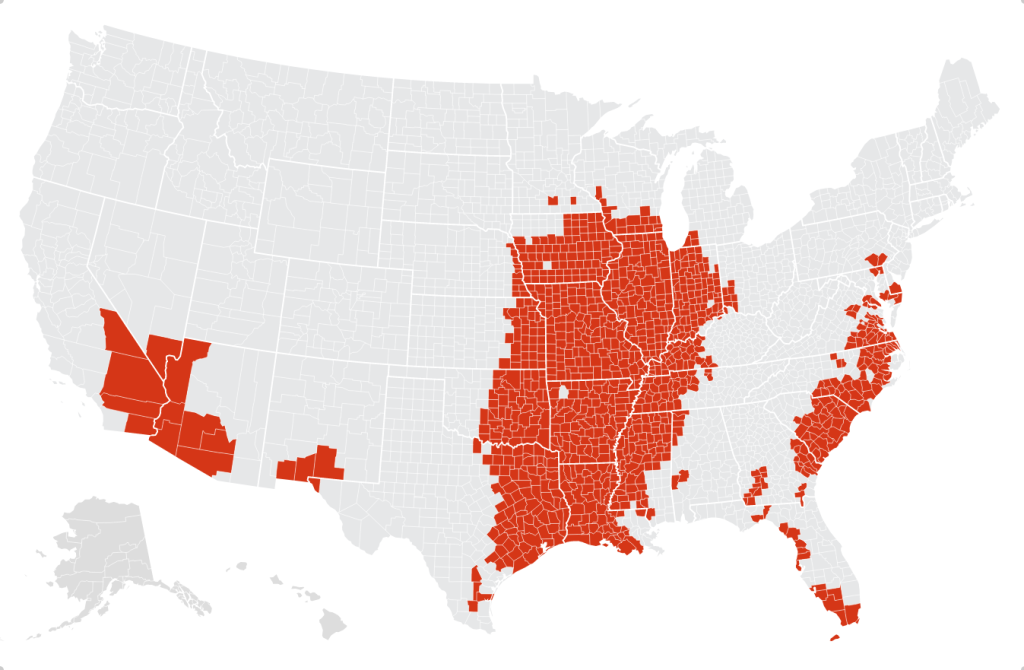
The mission statement of the First Street Foundation reads: Make climate risk accessible, easy to understand and actionable for individuals, governments, and industry. A changing climate is impacting the risks facing American properties, communities, and businesses as perils like flood, fire, heat, and drought become more common, and more severe…. First Street Foundation is a non-profit research and technology group dedicated to quantifying and communicating those risks by incorporating world class modeling techniques and analysis with the most up to date science available in order to simply, and effectively, inform Americans of their risk today and into the future from all environmental changes.
Extreme heat refers to a maximum heat index greater than 125°F. This refers to a temperature reached at least one day a year. Currently (that is, in 2022) 8 million Americans are exposed to it. By 2030, some additional coastal areas in the Southeast and Mid-Atlantic may also experience a heat index at or above 125°F. By 2053, the number of people exposed to extreme temperatures, is expected to increase to 107 million people.
Dangerous days have a heat index greater than 100 °F = 37.78 °C. The Gulf Coast and Southeast will see the highest chances and longest duration of exposure to these. While many place experience more than 20 consecutive days with heat indices above 100°F, by 2053, these streaks could involve up to 74 consecutive days.
Local hot days are days that exceed the temperatures typically experienced for a particular area. The West will have the highest chance of long durations of these.
Future cooling-driven increases in carbon emissions could aggravate warming further. Texas, Florida, California, Ohio and Missouri are the top 5 states with the greatest cooling demand expected increase in CO2 emissions between 2022 and 2053.
As a missionary for SI, the international system of units, temperature always presents a quandary. In this official system, temperature is measured in kelvin, with symbol K. Both the kelvin and celsius systems use a 100 K/ °C difference between the freezing and boiling point of water, at a standard/ sea-level air pressure reading.
0 K is set to absolute zero, which is -273.15 °C, while 0 °C, in the celsius system, is set to the freezing point of water. In the Fahrenheit system, water freezes at 32 °F = 0 °C and boils at 212 °F = 100 °C, resulting in a 180 °F difference between these two points.. Thus, 125 °F = 324.8167 K.
SI clergy undoubtedly use many nights, sleeplessly pondering if the extreme heat value should be increased to 325 K = 125.33 °F, or if 50 °C = 122 °F, should be used. Those prioritizing as little change as possible will support the former. Those wanting to use rounder values, ending in 0, will opt for the latter. The reason for this proposal is that the world needs a mechanism to compare extreme heat locations, which will require heat to be expressed in degrees celsius. This is why, personally, 50 °C holds greater appeal, even if more locations in the world will fall into that category.
Those wishing to be further perplexed by this topic, are invited to read the Wikipedia article on thermodynamic temperature. In an imperfect world, every gram of improved understanding is worth the effort.

